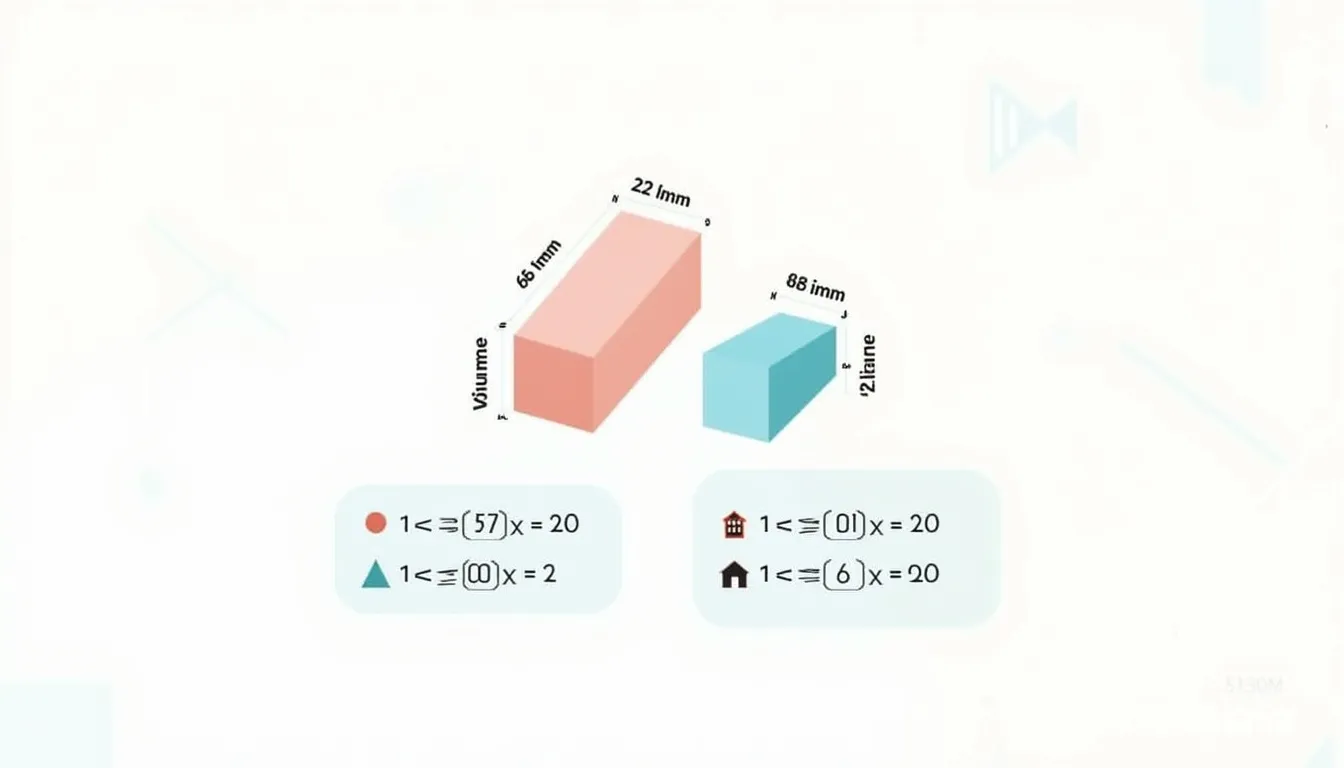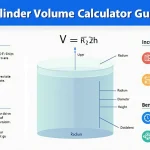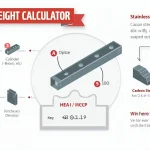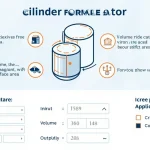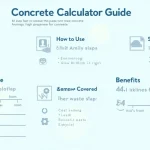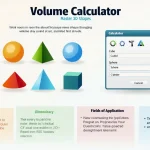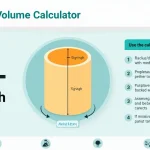Cubic Yards Calculator
Is this tool helpful?
How to use the tool
- Select Rectangular Prism or Cylinder.
- Type dimensions and pick units.
- Rectangular example A: Length = 10 ft, Width = 30 in, Height = 2 m.
- Rectangular example B: Length = 4 m, Width = 90 cm, Height = 18 in.
- Cylinder example A: Diameter = 4 yd, Height = 120 cm.
- Cylinder example B: Diameter = 250 cm, Height = 6 ft.
- Press “Calculate” to get volume in cubic yards and cubic feet.
- Hit “Reset” to clear all fields and start again.
Formulas used
- Unit conversions to yards: Feet ÷ 3; Inches ÷ 36; Meters × 1.09361; Centimeters ÷ 91.44; Yards = value.
- Rectangular volume: $$V = L \times W \times H$$
- Cylindrical volume: $$V = \pi r^{2} H = \pi \Bigl(\frac{D}{2}\Bigr)^{2} H$$
Checked example calculations
Rectangular Prism
Length = 10 ft = 3.33 yd, Width = 30 in = 0.83 yd, Height = 2 m = 2.19 yd. $$V = 3.33 \times 0.83 \times 2.19 \approx 6.07\;{\rm yd^{3}}$$
Cylinder
Diameter = 4 yd ⇒ r = 2 yd, Height = 120 cm = 1.31 yd. $$V = \pi (2)^{2} \times 1.31 \approx 16.48\;{\rm yd^{3}}$$
Quick-Facts
- 1 cubic yard = 27 cubic feet (NIST, 2008).
- Average U.S. ready-mix concrete price ≈ $135 / yd³ (HomeAdvisor, 2023).
- A standard mixer truck carries about 10 yd³ (NRMCA, 2022).
- Loose topsoil weighs roughly 2,000 lb / yd³ (University of Missouri Extension, 2021).
- 1 m³ = 1.308 yd³ (NIST, 2008).
FAQ
What is a cubic yard?
A cubic yard fills a cube one yard on each side; it equals 27 ft³ and 0.7646 m³ (NIST, 2008).
Why convert to cubic yards?
Construction materials such as concrete, gravel, and mulch are sold by the yard, so yard-based estimates align with supplier pricing (NRMCA, 2022).
How do I switch between units?
Enter any supported unit—feet, inches, meters, centimeters, or yards—and the calculator auto-converts each dimension to yards before computing volume.
Does the tool round results?
Yes, results display to two decimal places for easy reading while underlying calculations keep full precision.
How accurate are the conversions?
The tool uses conversion factors from NIST Special Publication 811, ensuring accuracy to at least four significant figures (NIST, 2008).
Can I estimate project cost with the volume?
Multiply cubic yards by local material price; e.g., 6 yd³ of concrete at $135/yd³ ≈ $810 before delivery fees (HomeAdvisor, 2023).
What if my shape is irregular?
Break the space into smaller rectangular or cylindrical sections, calculate each, then add the volumes.
Is there a weight estimate?
Multiply volume by material density; for topsoil, 6 yd³ × 2,000 lb/yd³ ≈ 12,000 lb (University of Missouri Extension, 2021).
Important Disclaimer
The calculations, results, and content provided by our tools are not guaranteed to be accurate, complete, or reliable. Users are responsible for verifying and interpreting the results. Our content and tools may contain errors, biases, or inconsistencies. Do not enter personal data, sensitive information, or personally identifiable information in our web forms or tools. Such data entry violates our terms of service and may result in unauthorized disclosure to third parties. We reserve the right to save inputs and outputs from our tools for the purposes of error debugging, bias identification, and performance improvement. External companies providing AI models used in our tools may also save and process data in accordance with their own policies. By using our tools, you consent to this data collection and processing. We reserve the right to limit the usage of our tools based on current usability factors.
